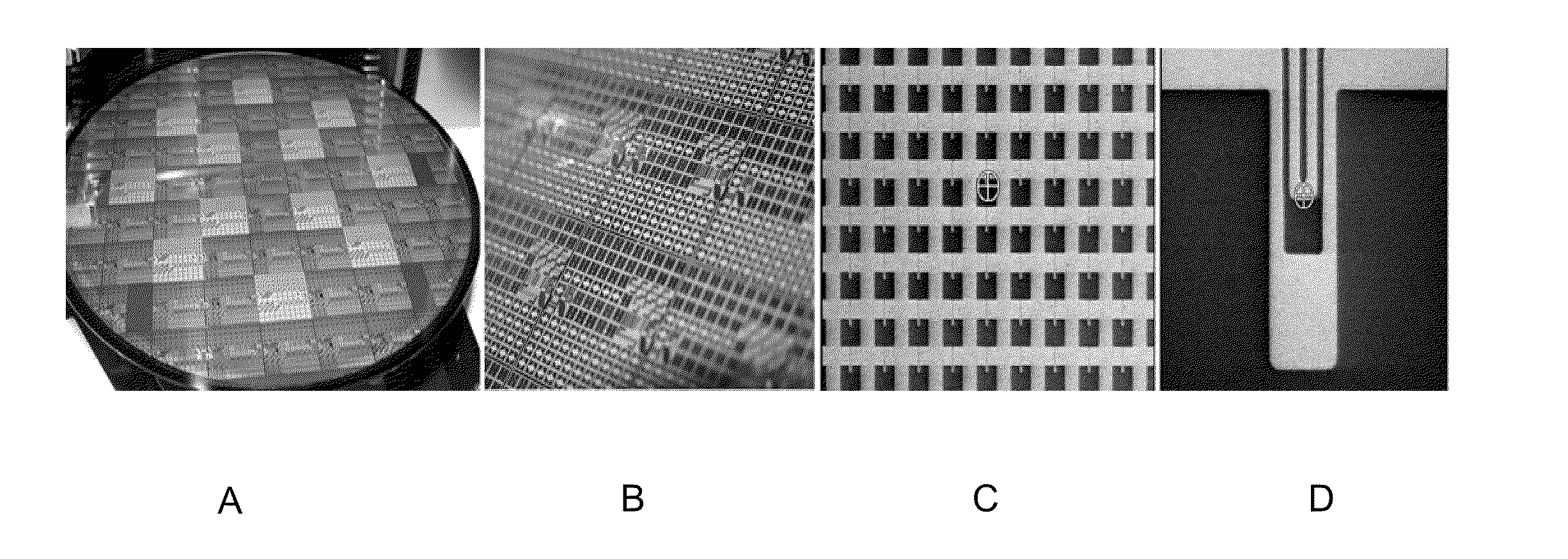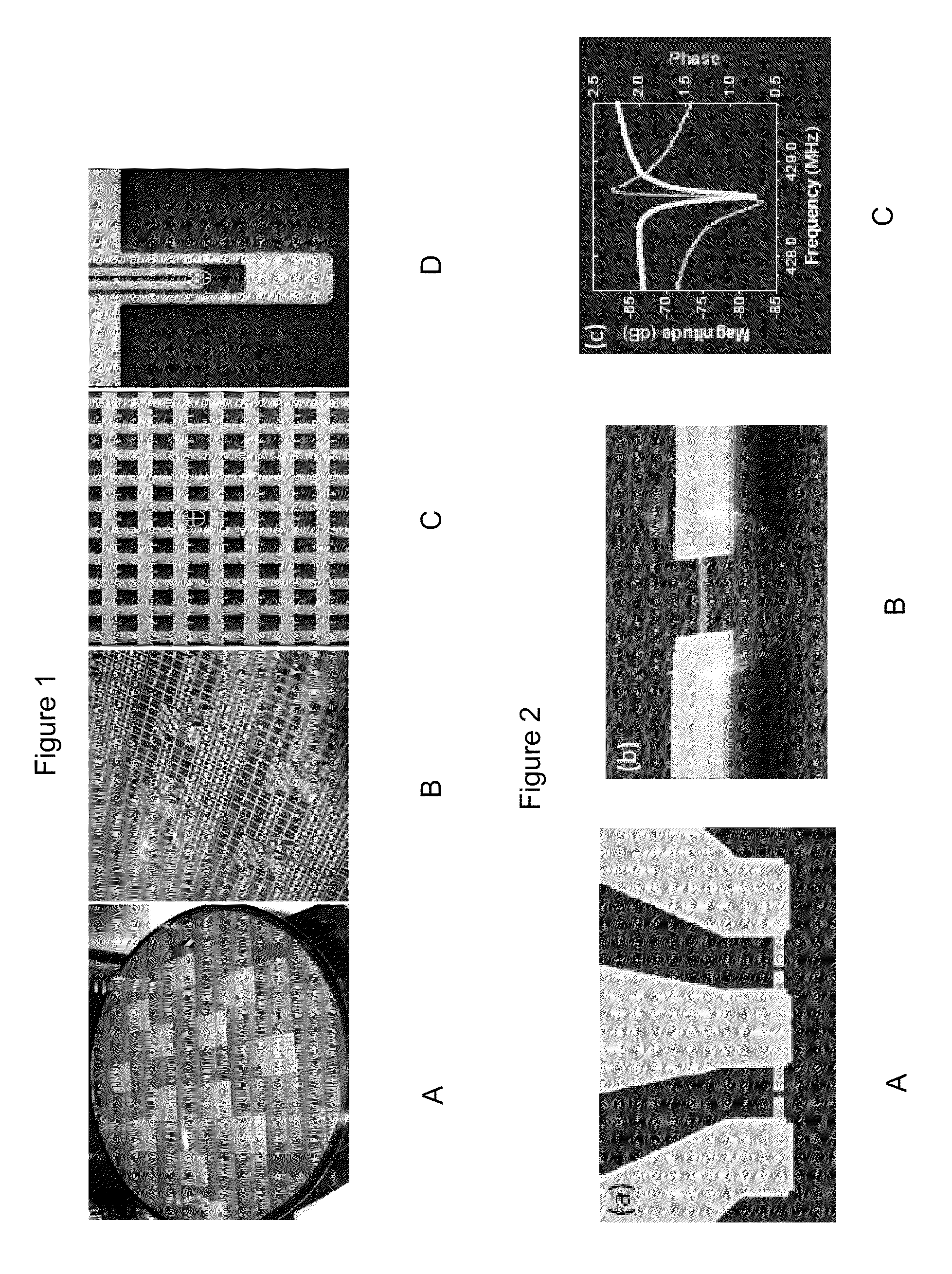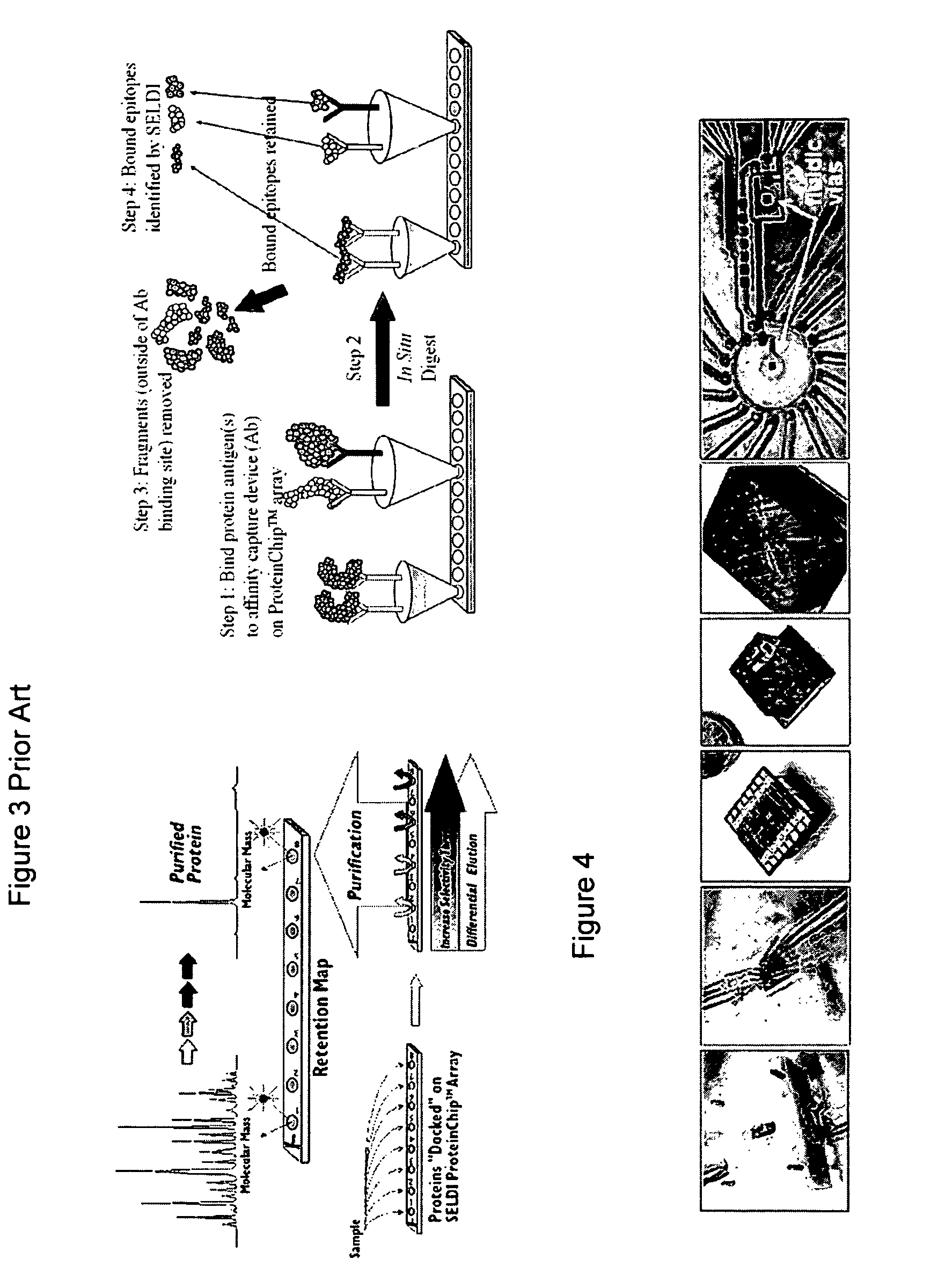Single molecule mass spectroscopy enabled by nanoelectromechanical systems (NEMS-MS)
a nanoelectromechanical system and single molecule technology, applied in the field of mass spectrometry, can solve the problems of no other technology that can rival the speed, sensitivity, and exact molecular characterization
- Summary
- Abstract
- Description
- Claims
- Application Information
AI Technical Summary
Benefits of technology
Problems solved by technology
Method used
Image
Examples
example 1
[0102]Generation NEMS-MS Spectra
[0103]To provide an unbiased extraction of NEMS-MS mass spectra from the experimentally obtained event-probability histograms, the experimental data is fit to realistic models. These models are based on predicted NEMS-MS event-probabilities assuming the injection of multicomponent mixtures—in these experiments, sample solutions containing either a Au nanoparticle dispersion, a family of BSA oligomers, or a family of re-aggregated D-amylase subunits. The fits are provided in an unbiased manner through automated procedures that allow the relative intensities of the sample's components to be deduced. After treating the intensities of the solution components as variable parameters, and use the minima of the sum-of-squared-errors (SSE) to determine the relative intensities of the (variable-radius) nanoparticles or molecular species that adsorb upon the NEMS.
[0104]Calculation of the SSE
[0105]Gold: A theoretical histogram from 1 million adsorption events is ...
example 2
[0108]FIG. 19 shows the results obtained from ESI of β-amylase with a hexapole drive frequency of 450 kHz. The event probability histogram displays a broad peak at 3600 Hz, which we associate with the β-amylase monomer. Sweet potato β-amylase is known to be a tetramer of identical subunits and under a variety of experimental conditions the protein molecules can fragment into individual subunits. The broadening of the monomer peak, as well as the absence of a clear bicuspid shape in the histogram, arise from the presence of such protein subunits in these experiments. As shown by the curve “decomposition” in FIG. 19, the experimental histogram can be readily explained by assuming a weighted superposition of subunits.
PUM
 Login to View More
Login to View More Abstract
Description
Claims
Application Information
 Login to View More
Login to View More - R&D
- Intellectual Property
- Life Sciences
- Materials
- Tech Scout
- Unparalleled Data Quality
- Higher Quality Content
- 60% Fewer Hallucinations
Browse by: Latest US Patents, China's latest patents, Technical Efficacy Thesaurus, Application Domain, Technology Topic, Popular Technical Reports.
© 2025 PatSnap. All rights reserved.Legal|Privacy policy|Modern Slavery Act Transparency Statement|Sitemap|About US| Contact US: help@patsnap.com



